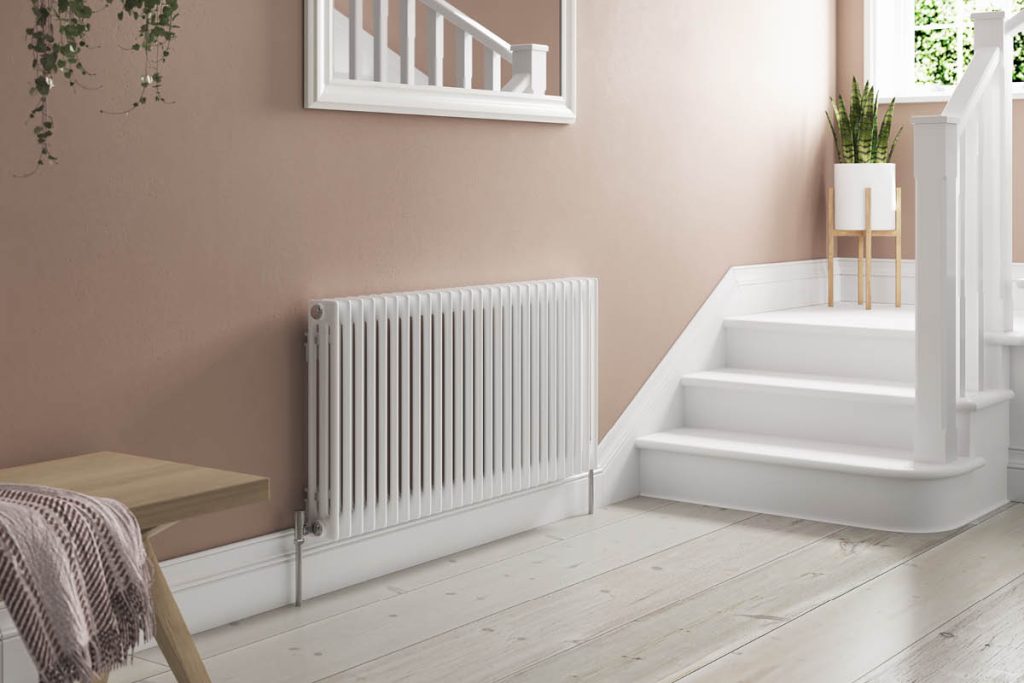
New radiators can bring more than just heat into your home. They can be a design element that brings your entire interior design and the building style of the house together. Here we have gathered all the best tips from our architectural advisor on what you should consider before buying new radiators.
At Hudevad, we offer all our customers the same advice that we give to architects. This means that we are happy to guide and assist you regarding your heating needs, special requirements and your interior design, so that you get the size and type of radiators you need and the design and look you want.
We look at your floor plan and review your options with you so that you can make the right decision.
If you are building a new house, you can make many considerations about where the radiator should be installed. The traditional thing is to place it under the window, which is why a horizontal radiator type or a lowline would be obvious.
But here I would like to challenge you a bit. And if you are into the modern, simple expression, then a radiator type like a vertical might be a more modern choice - and yet unpredictable.
If you are replacing an old radiator, you already have a defined area where the new one is to be installed. But modern radiators are far more efficient, which means they often take up less space - even if you choose a radiator with a retro look. Therefore, you may have more options than you think.
Many people's first reaction is to hide the radiator. And it is understandable that you want to hide an old and outdated radiator, while it would be a shame to hide a beautiful design radiator.
Great design - whether it's a piece of furniture, a lamp or a radiator - is created to be seen, perhaps even staged. But functional design doesn't necessarily need to be noticed. Good and functional design is sometimes what you don't notice, because it becomes a natural part of the interior.
If you want to hide the radiator, you don't have to do it with a radiator cover, which will only reduce the heating effect. Instead, you can choose to get a radiator that naturally fits in, for example by "hiding" it in a piece of furniture, such as a radiator bench, or let it be a built-in part of the floor, ceiling or wall.
A radiator does not have to be white. Just as you can get cars in many colours, you can also get radiators in other colours.
It is a good idea to consider the room in which the radiator will be placed: What colour palette is there in the room? What colour are the walls, furniture, floor, etc.? Should your radiator fit into a specific colour palette, or should it stand out?

It can be dangerous to claim that something is timeless. But when it comes to interior design, there are some design virtues that endure decade after decade.
So, ask yourself the question: Which radiator will I choose in 20 years?
At Hudevad, we designed the radiator with the flat front back in 1938, and there's a reason why it's still our bestseller. The simple, organic expression fits into any environment and it is built to last. Good design can only become timeless if it lasts long enough.
Something that many people forget to consider when buying new radiators are the piping. Where should the pipes go - should they be visible, or should they be hidden to achieve a simpler look?
Pipes can be hidden in the floor or in the wall. They can be hidden under the radiator or behind it. In addition to giving a simpler and more harmonious look, it also has a practical advantage, as it becomes much easier to clean when there are no visible pipework.
Few people realize that a radiator does not have to look like a radiator. In fact, radiators come in many different shapes and with several functions. Among other things, Hudevads radiator bench is an excellent choice if you need a radiator and a place to sit in a smaller room. Most people won't even know it's a radiator.

But your radiator can also be fitted with hooks or a towel rail, so the heat can be utilized to dry, for example, tea towels in the kitchen or towels in the bathroom. There are many options when it comes to buying new radiators. If you are still in doubt you are always welcome to contact us for assistance. We will be happy to advice you.





